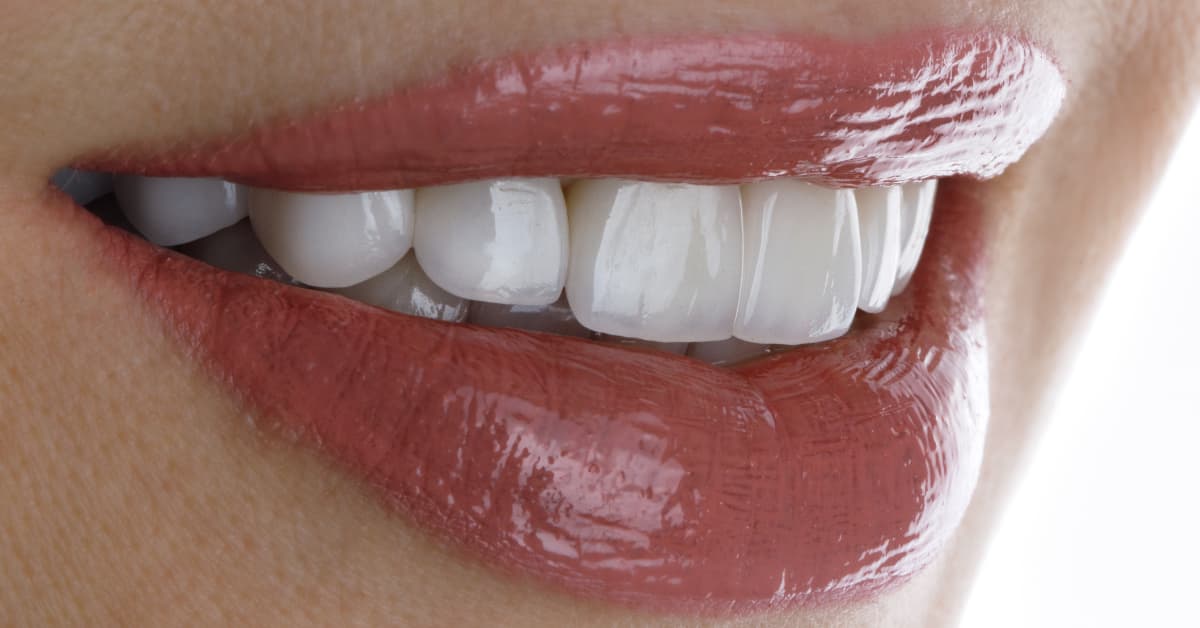Ceramic Veneers: Your Complete Guide to Permanent Smile Transformation
Stop hiding your smile behind closed lips, avoiding photos, or feeling self-conscious about your teeth every single day. As someone who has placed over 5,000 ceramic veneers in my Henderson and Las Vegas practices, I can tell you this: the patients who achieve the most dramatic transformations are the ones who stop accepting “good enough” and start investing in solutions that actually last.
Ceramic veneers are ultra-thin porcelain shells permanently bonded to your natural teeth, creating a flawless smile that maintains its beauty for 15-20 years. But here’s what separates an ordinary veneer result from a life-changing transformation: understanding exactly how ceramic dental veneers work, what the process really involves, and why porcelain veneers represent the gold standard for permanent smile makeovers.
Last month, a patient walked into my office after hiding her smile for eight years. Tetracycline staining from childhood antibiotics had left her teeth with gray streaks that whitening couldn’t touch. Six weeks later, her ceramic tooth veneers gave her back something I see transform lives daily: the confidence to smile without thinking about it first.
You might be wondering if ceramic veneers could work for your situation. The answer depends on understanding what these dental veneers can accomplish, what the investment really means, and whether you’re ready to commit to the process that creates results lasting decades rather than years.
Why Ceramic Veneers Work When Everything Else Fails
Here’s what I’ve learned from two decades of cosmetic dentistry: patients don’t just want prettier teeth. They want to feel confident speaking in meetings, attractive in photographs, and comfortable eating without worrying about their smile.
Ceramic veneers address multiple problems simultaneously in ways other treatments simply cannot match. While teeth whitening only changes color, and orthodontics only moves tooth position, porcelain veneers can simultaneously correct color, shape, size, spacing, and minor alignment issues – all while strengthening your natural tooth structure.
The ceramic material itself mimics natural tooth enamel better than any other restorative option available today. When light hits ceramic dental veneers, it reflects and refracts exactly like healthy enamel, creating depth and translucency that looks completely natural under any lighting condition.
But here’s where most patients get confused: not every veneer option delivers the same results. Composite veneers might cost less initially, but they typically need replacement every 3-5 years and never achieve the same level of stain resistance or natural appearance as ceramic alternatives.
Ceramic tooth veneers bond permanently to your enamel using advanced adhesive technology, creating a restoration that’s actually stronger than your original tooth structure. This isn’t just about aesthetics – it’s about creating a solution that protects and preserves your natural teeth for decades.
Think about it this way: would you rather invest in a temporary fix that needs constant maintenance, or a permanent solution that improves with proper care? The mathematics strongly favors ceramic veneers for anyone seeking lasting transformation.
The Real Ceramic Veneer Process: What Actually Happens
Most patients arrive at my office with unrealistic expectations about the veneer process, usually based on social media posts showing same-day transformations. Let me walk you through what actually creates exceptional results.
The ceramic veneer process requires three carefully orchestrated appointments spread over 3-4 weeks, and rushing any stage compromises your final outcome. During our first appointment, we spend significant time discussing your goals, analyzing your facial structure, and determining the ideal shape, size, and shade for your new smile.
This isn’t about making your teeth as white as possible – it’s about creating harmony between your teeth, gums, lips, and overall facial features. Digital imaging helps us preview your results, but the real artistry happens in shade selection and proportion planning.
The preparation appointment involves removing approximately 0.5-0.7 millimeters of enamel from each tooth receiving a ceramic veneer. This sounds scary, but it’s actually less tooth reduction than required for a crown, and it creates the space needed for your porcelain veneers to look natural rather than bulky.
Temporary veneers protect your teeth during the 2-3 weeks while your permanent ceramic dental veneers are being custom-crafted by master ceramists. These temporaries also give you a preview of your final results and allow us to make any adjustments before your permanent restorations are complete.
The final appointment involves permanently bonding each ceramic veneer using specialized cement and light activation technology. Every detail matters during this phase – bite alignment, contact points between teeth, and margin adaptation all affect how your veneers feel and function long-term.
Some patients ask why the process can’t be faster. The answer is simple: exceptional results require time. The ceramic material needs specific conditions to achieve maximum strength, and your gums need time to adapt to your new tooth contours.
Investment Reality: Understanding Ceramic Veneer Costs
The question I hear most frequently is: “How much do ceramic veneers cost?” In Las Vegas, ceramic veneers typically range from $1,200 to $2,500 per tooth, depending on the complexity of your case and the materials selected.
But here’s the conversation I have with every patient: the initial investment matters less than the long-term value equation. Quality ceramic veneers from an experienced cosmetic dentist should function beautifully for 15-20 years with proper care.
Let me break down the real mathematics: $1,800 per tooth over 18 years equals approximately $100 per year for a solution that eliminates staining, chipping, and shape irregularities while boosting confidence daily. Compare that to professional whitening at $500-800 every 1-2 years with diminishing effectiveness, composite bonding at $300-600 per tooth needing replacement every 3-5 years, or orthodontics plus whitening at $4,000-8,000 with 18-24 month treatment time.
The mathematics strongly favor ceramic dental veneers for comprehensive smile transformation. Many patients are surprised to learn that financing options make the monthly investment comparable to a car payment – but unlike a car, your smile appreciates in value over time.
You might be thinking this sounds expensive. I understand that concern completely. But consider this: how much have you already spent on temporary solutions that didn’t deliver lasting results? How much is confidence worth to you professionally and personally?
Most patients tell me they wish they’d made this investment years earlier. The return on investment – measured in career opportunities, social confidence, and personal satisfaction – typically exceeds the financial cost within the first year.
Ceramic Veneer Care: Protecting Your Investment
One of the biggest misconceptions about ceramic veneers is that they require extensive special maintenance. The reality is both simpler and more reassuring: ceramic dental veneers need exactly the same daily care as your natural teeth.
Daily brushing with non-abrasive fluoride toothpaste and regular flossing remain your most important maintenance activities. Electric toothbrushes work perfectly with ceramic veneers and often improve gum health, which is crucial for long-term success.
The habits that damage ceramic veneers are identical to those that harm natural teeth: chewing ice, opening packages with your teeth, nail biting, and grinding during sleep. If you grind your teeth at night, a custom nightguard becomes essential – not just for protecting your veneers, but for preventing jaw problems and headaches.
Regular dental cleanings every six months help maintain the polish and prevent buildup around veneer margins. Your hygienist may use slightly modified techniques, but professional cleanings remain as important as ever.
Here’s what surprises most patients: properly maintained ceramic veneers often outlast their expected lifespan significantly. I have patients whose porcelain veneers are approaching 25 years and still look remarkable. The key is consistent daily care and avoiding habits that create excessive force.
Some patients worry about staining. While ceramic material resists staining better than natural teeth, the margins where veneers meet your natural teeth can still accumulate discoloration without proper oral hygiene. This is why consistent brushing and flossing matter so much.
Are Ceramic Veneers Right for Your Situation?
After placing thousands of ceramic veneers, I’ve learned to identify patients who will achieve exceptional results versus those who might benefit more from alternative treatments.
Ceramic veneers work best for patients with healthy teeth and gums who want to address multiple cosmetic concerns simultaneously.
Perfect candidates typically have discoloration that doesn’t respond to whitening like tetracycline staining or fluorosis, minor spacing or alignment issues such as small gaps or slightly rotated teeth, worn or chipped teeth from age-related wear or old bonding failures, and size discrepancies where teeth appear too small or disproportionate to facial features.
However, ceramic dental veneers aren’t appropriate for everyone. Patients with severe bite problems, significant decay, or advanced gum disease need to address these issues first. Heavy teeth grinders may benefit more from crowns, which can withstand extreme forces better than veneers.
The decision ultimately comes down to your goals, timeline, and commitment level. If you want dramatic results relatively quickly and you’re prepared to protect your investment long-term, ceramic veneers represent one of the most predictable cosmetic dental treatments available.
But here’s what I tell every patient during consultations: don’t choose ceramic veneers because someone else thinks you should have them. The best veneer outcomes occur when patients have clear personal motivation for transformation and realistic expectations about the process.
You might be wondering about pain or sensitivity. Most patients experience minimal discomfort during and after the veneer process. Local anesthesia during preparation appointments eliminates any pain, and temporary sensitivity typically resolves within a few days of final placement.
Your Next Step Toward Smile Transformation
If you’ve read this far, you’re probably ready to stop wondering “what if” and start taking action toward the smile you’ve always wanted. The consultation process will answer your specific questions about candidacy, timeline, and investment while giving you a clear picture of what ceramic veneers can accomplish for your unique situation.
During your ceramic veneer consultation appointment, we’ll use digital imaging technology to show you exactly what your results could look like and discuss all your options without pressure or obligation.
Your ideal smile is closer than you think. The only remaining question is whether you’re ready to invest in yourself and experience the confidence that comes with loving your smile unconditionally.
Remember: every day you delay is another day spent accepting less than you deserve. Your smile affects every interaction, every photograph, and every moment of self-confidence. The time for temporary solutions has passed – your permanent smile transformation starts with one decision.
Contact Comprehensive Dental Care today to schedule your ceramic veneer consultation, or visit our Henderson and Las Vegas locations to begin your journey toward the smile that changes everything!



